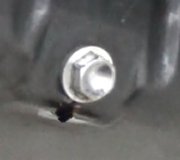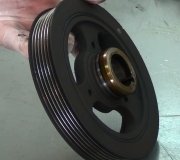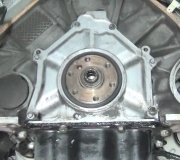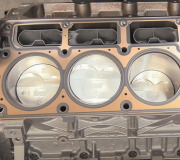Before I even read your last paragraph, as soon as you confirmed you have a 3.0L, I was going to start with, "this is not an interference engine, so if you mess something up, there will be no damage done to the valves or anything else, except your pride. As I'm typing this, I'm sitting in my rusty trusty daily driver '88 Grand Caravan with a 3.0L engine. I also have an '89 with a 3.0L, and a '94 and a '95 with 3.3Ls. I will never own any vehicle with an interference engine.
I do not like Chiltons and Haynes manuals. They only cover the stuff the weakest of do-it-yourselfers can attempt. I need electrical diagrams to look at, and those are missing. You're better off with a copy of the manufacturer's service manual. I actually sell them at the nation's second largest old car show swap meet. You can find them on eBay for a reasonable cost. They cost over $100.00 per set when they were new or less than five years old. The Chrysler dealers have the brochure either in their office or the parts department that tells you what is available yet and how to order them directly.
I wouldn't be surprised if replacing the cam seal is not included in a Haynes manual. Chrysler is typically pretty good about designing things with an eye toward repair later, (exactly the opposite of what the engineers do at GM), but this is a Mitsubishi engine. Still, there are some worthwhile shortcuts to be aware of. First, when you remove the camshaft sprocket, the belt is going to be putting downward pressure on it. You'll get it off, but tugging it back on will be a challenge. The tensioner pulley is impossible to reach unless you remove the plastic covers. As I recall, the top and bottom halves are separate pieces, but I can't remember if you can get to the tensioner by just removing the top cover. That tensioner has a bolt that must be loosened, then a spring pulls on the tensioner with the correct amount of force. If you can loosen that bolt, the tensioner will be able to move and let you pull up harder on the cam sprocket when it's time to reinstall it.
The first trick is to use some string or wire to tie the timing belt to each cam sprocket. That way the belt can't jump any teeth, and there will be no need to check, and / or set the belt timing. Down at the crankshaft sprocket, there is a lip under the belt that prevents it from dropping down enough to jump a tooth. You would have to remove the vibration damper and lower cover, then slide the belt off the sprocket if you wanted to move it a tooth or more.
Be aware that the camshafts are going to rotate when you remove its sprocket. That's due to the forces the open valve springs are putting on the camshaft lobes. Try to watch which way it spins, then turn the crankshaft the same way when you're ready to reinstall the sprocket. Doing that is easier than trying to turn the camshaft, if you even could.
Before you even get this far, check to see if that seal is popped out. There are cam plugs on the driver's side of the heads that have been known to pop out, but I think the sprocket will prevent that from happening on the passenger side. If the seal DID come out, you should be able to pry it back in, but then you'll have to remove that valve cover to see what is allowing the camshaft to walk sideways and push that seal out. I'm still trying to come to grips with how fast you said this seal is leaking oil.
Now for the next tidbit, I had one of my students chasing oil leaks on my van a few years ago, and one that he found was the same cam seal but on the rear head. He surprised me by finding a totally different shortcut. He removed the valve cover, removed the upper timing cover, then tied the belt to the sprocket like I mentioned, but then he used a rubber strap to the hood to hold a little tension on the belt. From there he removed the camshaft and caps, and pulled the camshaft out of the sprocket. I didn't think that was going to work, but I left him to learn that on his own. Actually, it worked real well, By doing it the service manual way, you have to pull the sprocket away from the camshaft, and that means tipping it. Tipping it means the belt won't allow you to lift it enough or to straighten it so it will slide back onto the camshaft. By doing it his way, he was able to hold the sprocket straight and just slide the camshaft into it. It was also easier to rotate the camshaft to line up the key way than to try to do that by rotating the crankshaft and the other camshaft.
If you try that shortcut, assuming it will work on the front head, you're going to have to remove the distributor.
Saturday, March 14th, 2015 AT 9:53 PM




